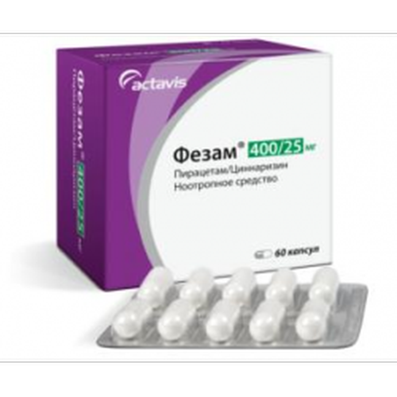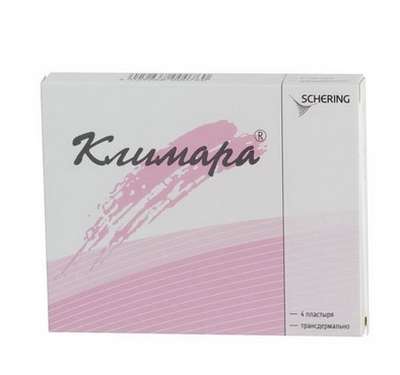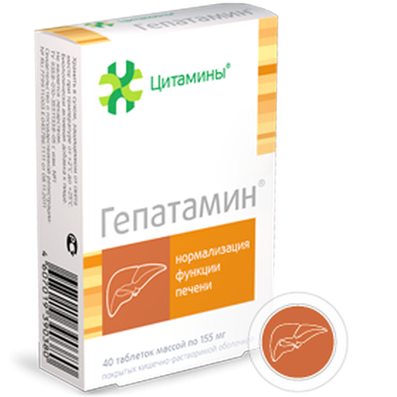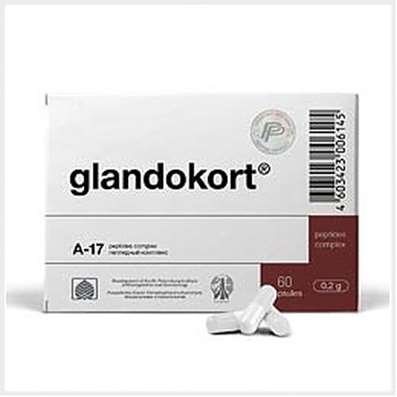Instruction for use: Fragmin
I want this, give me price
Dosage form: Solution for intravenous and subcutaneous administration; Solution for injection
Active substance: Dalteparinum natrium
ATX
B01AB04 Dalteparin
Pharmacological group
Anticoagulant straight [Anticoagulants]
The nosological classification (ICD-10)
I20.0 Unstable angina: heberden disease; Angina pectoris; The attack of angina pectoris; recurrent angina; Spontaneous angina; Stable angina pectoris; Angina rest; Angina progressing; Angina mixed; Angina spontaneous; stable angina; Chronic stable angina; Angina Syndrome X
I26 Pulmonary embolism: Recurrent thromboembolism of the pulmonary artery; Recurrent pulmonary embolism; Thromboembolism of the branches of the pulmonary artery; Thromboembolism of the lungs; Thromboembolism of the pulmonary artery (PE); Thrombosis of the pulmonary artery; Thromboembolism; Thromboembolism of the pulmonary artery; Thromboembolism; Pulmonary embolism; Thromboembolism of the pulmonary artery and its branches; Thromboembolism of pulmonary vessels; Embolism of the lung; Embolism of the pulmonary artery; Acute massive thromboembolism of the pulmonary artery
I80 Phlebitis and thrombophlebitis: Diseases of peripheral vessels; Inflammation of superficial veins; Inflammatory diseases of veins; Deep venous thrombophlebitis; The disease of veins; Disease of the veins of the lower extremities; Diseases of peripheral vessels; Migrating phlebitis; Insufficiency of veins of lower extremities; Exacerbation of chronic thrombophlebitis; Acute thrombophlebitis; Acute thrombophlebitis of superficial veins; Periphlebitis; Periflebit surface; Superficial inflammation of veins; Surface thrombophlebitis; Surface phlebitis; Thrombophlebitis; Deep vein thrombophlebitis; Thrombophlebitis superficial; Phlebitis; Phlebitis of deep veins; Phlebitis of superficial veins; Phlebopathy; Chronic thrombophlebitis; Endophlebitis
I82 Embolism and thrombosis of other veins: Recurrent venous thrombosis; Postoperative thrombosis; Venous thrombosis; Acute venous thromboembolism; Recurrent vein thrombosis; Venous thrombosis; Thrombosis of veins of internal organs; Venous thrombosis; Deep vein thrombosis; Thrombosis of blood vessels; Vascular thrombosis; Thrombosis of veins; Deep vein thrombosis; Thromboembolic diseases; Thromboembolism of veins; Severe venous thrombosis; Embolism; Embolism of veins; Thromboembolic complications
Z100 * CLASS XXII Surgical practice: Abdominal surgery; adenomectomy; Amputation; Coronary angioplasty; Angioplasty of the carotid arteries; Antiseptic skin treatment for wounds; Antiseptic Hand; Appendectomy; atherectomy; Balloon coronary angioplasty; Vaginal hysterectomy; The coronary bypass; Interventions in the vagina and cervix; Interventions on the bladder; Intervention in the mouth; Restoration and reconstructive surgery; Hand hygiene of medical personnel; Gynecologic surgery; Gynecological intervention; Gynecological surgery; Hypovolemic shock during operations; Disinfection of purulent wounds; Disinfection of wounds edges; Diagnostic intervention; Diagnostic procedures; Cervical Diathermocoagulation; Long-surgery; Replacing the fistula catheters; Infection in orthopedic surgery; Artificial heart valve; cystectomy; Short-term outpatient surgery; Short-term operation; Short surgical procedures; Krikotireotomiya; Blood loss during surgery; Bleeding during surgery and in the postoperative period; Kuldotsentez; laser photocoagulation; laser coagulation; retinal laser coagulation; Laparoscopy; Laparoscopy in Gynecology; CSF fistula; Small gynecological operations; Small surgical procedures; Mastectomy and subsequent plastic; mediastinotomy; Microsurgical operations on the ear; Mukogingivalnye operation; suturing; Minor surgery; neurosurgical operation; Immobilization of the eyeball in ophthalmic surgery; testectomy; pancreatectomy; Perikardektomiya; The period of rehabilitation after surgery; The period of convalescence after surgery; Percutaneous transluminal coronary angioplasty; Pleural thoracentesis; Pneumonia postoperative and posttraumatic; Preparation for surgical procedures; Preparation for surgery; Preparation of the surgeon's hands before surgery; Preparation of the colon for surgical procedures; Postoperative aspiration pneumonia in neurosurgical and thoracic surgery; Postoperative nausea; Postoperative bleeding; postoperative granuloma; postoperative shock; The early postoperative period; myocardial revascularization; Radiectomy; gastric Resection; bowel resection; uterine Resection; liver Resection; enterectomy; Resection of part of the stomach; Reocclusion of the operated vessel; Bonding tissues during surgical procedures; Removal of sutures; Condition after eye surgery; Condition after surgery; Condition after surgery in the nasal cavity; Condition after gastrectomy; Status after resection of the small intestine; Condition after tonsillectomy; Condition after removal of the duodenum; Condition after phlebectomy; Vascular surgery; Splenectomy; Sterilization of surgical instruments; Sterilization of surgical instruments; sternotomy; Dental surgery; Dental intervention in periodontal tissues; strumectomy; Tonsillectomy; Thoracic surgery; Thoracic surgery; total gastrectomy; Transdermal intravascular coronary angioplasty; Transurethral resection; Turbinektomiya; Removal of a tooth; cataract surgery; Removal of cysts; tonsillectomy; Removal of fibroids; Removing the mobile primary teeth; Removing polyps; Removing broken tooth; Removal of the uterus body; Removal of sutures; Fistula likvoroprovodyaschih ways; Frontoetmoidogaymorotomiya; Surgical infection; Surgical treatment of chronic limb ulcers; Surgery; The surgery in the anal area; The surgery on the colon; Surgical practice; The surgical procedure; Surgical interventions; Surgery on the gastrointestinal tract; Surgical procedures on the urinary tract; Surgical procedures on the urinary system; Surgical intervention of the genitourinary system; Surgical procedures on the heart; Surgical manipulation; surgery; Surgery on the veins; Surgical intervention; Vascular surgery; Surgical treatment of thrombosis; Surgery; cholecystectomy; Partial gastric resection; hysterectomy; Percutaneous transluminal coronary angioplasty; Percutaneous transluminal angioplasty; Coronary artery bypass; tooth Extirpation; Extirpation of milk teeth; pulpectomy; pulsative cardiopulmonary bypass; tooth Extraction; teeth Extraction; cataract extraction; Electrocoagulation; endourological intervention; episiotomy; Etmoidotomiya; Complications after tooth extraction
Composition and release form
Solution for injection - 0.2 ml
Dalteparin sodium 2500 IU; 5000 IU
Excipients: water for injection; sodium chloride; Sodium hydroxide or hydrochloric acid q.s.
In disposable syringes of 0.2 ml; In the blister for 5 pcs .; In a pack of cardboard 2 blisters.
Solution for injection - 0.3 ml
Dalteparin sodium 7500 IU
Excipients: water for injection; sodium chloride
In disposable syringes of 0.3 ml each; In the blister for 5 pcs .; In a pack of cardboard 2 blisters.
Solution for injection - 0.4 ml
Dalteparin sodium 10000 IU
Excipients: water for injection; sodium chloride
In disposable syringes of 0.4 ml; In the blister for 5 pcs .; In a pack of cardboard 1 blister.
Solution for injection - 0.5 ml
Dalteparin sodium 12500 IU
Excipients: water for injection; sodium chloride
In disposable syringes of 0.5 ml each; In the blister for 5 pcs .; In a pack of cardboard 1 blister.
Solution for injection - 0.6 ml
Dalteparin sodium 15000 IU
Excipients: water for injection; sodium chloride
In disposable syringes of 0.6 ml; In the blister for 5 pcs .; In a pack of cardboard 1 blister.
Solution for injection- 0.72 ml
Dalteparin sodium 18000 IU
Excipients: water for injection; sodium chloride
In disposable syringes of 0.72 ml; In the blister for 5 pcs .; In a pack of cardboard 1 blister.
Solution for injection - 1 ml
Dalteparin sodium 10000 IU
Excipients: water for injection; sodium chloride
In ampoules of 1 ml; In a pack of cardboard 10 ampoules.
Description of dosage form
Transparent, colorless or yellowish solution.
Characteristic
Low molecular weight heparin isolated during controlled depolymerization (with nitrous acid) of sodium heparin from the mucous membrane of the small intestine of the pig and subjected to additional purification by ion exchange chromatography.
The preparation consists of sulfated polysaccharide chains having an average molecular weight of 5,000 daltons; With 90% having a molecular weight of 2,000 to 9,000 daltons; The degree of sulfation is 2-2.5 per disaccharide.
Pharmachologic effect
Mode of action - Anticoagulant.
The anticoagulant effect is due, first of all, to the inhibition of factor Xa, which affects insignificantly during clotting time. Slightly affects the adhesion of platelets, ie. Little effect on primary hemostasis.
Pharmacokinetics
Bioavailability after SC administration is approximately 90%; Pharmacokinetic parameters do not depend on the dose. After intravenous administration of the drug T1 / 2 is 2 hours, after SC administration - 3-5 hours. In patients with uremia T1 / 2 of the drug increases. It is excreted mainly by the kidneys.
Indication of the drug Fragmin
Acute thrombosis of deep veins, thromboembolism of the pulmonary artery, unstable angina and myocardial infarction (without Q wave on the ECG); Prevention of blood coagulation in the system of extracorporeal circulation during hemodialysis and hemofiltration (in patients with acute and chronic renal insufficiency), prevention of thrombosis during surgical (including orthopedic) interventions.
Contraindications
Hypersensitivity to sodium dalteparin (including other low-molecular heparins and heparin), immune thrombocytopenia (caused by a history of heparin or suspected of its presence), bleeding (clinically significant, for example, from the gastrointestinal tract against the stomach ulcer or duodenal ulcer, Intracranial hemorrhage), severe hypocoagulation, blood coagulation disorders, septic endocarditis, recent trauma or surgical interventions on CNS organs, organs of vision and hearing; Planned spinal or epidural anesthesia or other procedures accompanied by lumbar puncture (this refers to high doses of Fragmin).
Pregnancy and breast-feeding
Possible use in pregnancy, if the expected effect of therapy exceeds the potential risk to the fetus.
It is not established whether Fragmin is excreted in human milk.
Side effects
On average, 1% of patients, bleeding, hematoma at the injection site, reversible non-immune thrombocytopenia, pain at the injection site, allergic reactions, and transient increase in hepatic transaminase activity (ACT, ALT).
In several cases - immune thrombocytopenia (with / without thrombotic complications), skin necrosis, anaphylactic reactions, development of spinal or epidural hematoma.
Interaction
When used simultaneously with drugs that affect hemostasis, such as: thrombolytic agents, other anticoagulants, NSAIDs, as well as inhibitors of platelet function, the anticoagulant effect of Fragmin can be enhanced; Sharing with antihistamines, cardiac glycosides, tetracyclines, ascorbic acid weakens the action of dalteparin.
Compatibility with solutions for intravenous administration. Fragmin is compatible with isotonic sodium chloride solution (9 mg / ml) and isotonic solution of dextrose (50 mg / ml).
Dosing and Administration
SC, IV (by stream infusion or by drop infusion).
In the treatment of acute deep vein thrombosis and pulmonary artery thromboembolism - sc, 200 IU / kg 1 time per day or 100 IU / kg 2 times a day. Monitoring of anticoagulant activity can be avoided, but it should be borne in mind that it may be required in the treatment of special groups of patients. The recommended Cmax in plasma should be 0.5-1 IU anti-Xa / ml. At the same time, you can immediately begin therapy with indirect anticoagulants (antagonists of vitamin K). Such combination therapy should be continued until the prothrombin index reaches the therapeutic level (usually not earlier than 5 days later). Treatment of patients in outpatient settings can be carried out at the same doses that are recommended for inpatient treatment.
To prevent blood coagulation in the extracorporeal circulation system during hemodialysis or hemofiltration – IV, choosing the dosing regimen from the following.
Patients with chronic renal failure or patients without the risk of developing bleeding usually require a small dose adjustment, so most patients do not need to monitor anti-Xa levels frequently. When the recommended doses are administered during hemodialysis, a plasma level of 0.5-1 ME anti-Xa / ml is usually achieved in blood plasma.
With a duration of hemodialysis or hemofiltration of less than 4 hours, once in / in struino in a dose of 5000 ME, either the regimen can be used, either for procedures lasting more than 4 hours.
With a duration of hemodialysis or hemofiltration more than 4 hours - in / in jet 30-40 IU / kg, followed by IV infusion of 10-15 IU / kg / h.
Patients with acute renal failure or patients with a high risk of bleeding - in / in a jet 5-10 IU / kg followed by iv dropwise administration of 4-5 IU / kg / h. In patients who undergo hemodialysis for acute renal failure, the drug is characterized by a narrower therapeutic index than patients in chronic hemodialysis, and therefore they need adequate monitoring of the level of anti-Xa. The recommended maximum plasma level should be 0.2-0.4 IU anti-Xa / ml.
For the prevention of thrombosis during surgical interventions - p / k. Monitoring of anticoagulant activity, as a rule, is not required. When the drug is administered at recommended doses, Cmax in plasma is 0.1 to 0.4 IU anti-Xa / ml.
When performing operations in general surgical practice: patients with the risk of developing thromboembolic complications - sc to 2500 ME for 2 hours before the operation, then after surgery - sc to 2500 IU / day (every morning) for the entire period the patient is On a bed rest (usually 5-7 days); Patients with additional risk factors for thromboembolic complications (eg, patients with malignant tumors) Fragmin should be used throughout the period the patient is on bed rest (usually 5-7 days or more).
1. At the beginning of therapy the day before the surgery: 5000 ME p / in the evening before the operation, then 5000 ME every wake after the operation.
2. At the beginning of therapy on the day of the operation: 2500 ME sc / 2 hours before the operation and 2500 ME SC after 8-12 hours, but not earlier than 4 hours after the end of the operation. Then, from the next day, every morning, 5000 ME is injected.
When performing orthopedic operations (for example, in operations on hip arthroplasty), Fragmin should be administered up to 5 weeks after the operation, by selecting one of the dosing regimens listed below.
1. At the beginning of therapy the evening before the operation: 5000 ME p / on the evening before the operation, then 5000 ME every wake after the operation.
2. At the beginning of therapy on the day of the operation: 2500 ME sc / 2 hours before the operation and 2500 ME SC after 8-12 hours, but not earlier than 4 hours after the end of the operation. Then, from the next day, every morning - to 5000 ME p / k.
With unstable angina and myocardial infarction (without Q-wave on the ECG), monitoring of anticoagulant activity is generally not required, but it should be borne in mind that it may be required in the treatment of special groups of patients. The recommended Cmax in plasma should be 0.5-1 ME anti-Xa / ml (simultaneously it is advisable to conduct therapy with acetylsalicylic acid at a dose of 75 to 325 mg / day). Fragmin injected sc to 120 IU / kg every 12 hours. The maximum dose should not exceed 10,000 IU every 12 hours. Therapy should be continued until the patient's clinical condition becomes stable (usually at least 6 days) or longer ( At the discretion of the doctor). Then it is recommended to go to a long-term therapy with Fragmin in a constant dose right up to revascularization (percutaneous interventions or aorto-coronary bypass surgery). The total duration of therapy should not exceed 45 days. The dose of Fragmin is selected taking into account the sex and body weight of the patient:
- for women with a body weight of less than 80 kg and men weighing less than 70 kg, 5000 ME should be injected every 12 hours;
- for women with a body weight of 80 kg and more, and men with a body weight of 70 kg or more, 7500 IU should be injected every 12 hours.
Overdose
Symptoms: bleeding.
Treatment: administration of protamine (1 mg inhibits 100 IU of dalteparin).
Precautionary measures
Caution should be exercised in appointing Fragmin to patients with an increased risk of bleeding; This group includes patients with thrombocytopenia, impaired platelet function, severe hepatic or renal insufficiency, uncontrolled hypertension, hypertensive or diabetic retinopathy.
Information on the effectiveness and safety of the use of Fragmin in pediatrics is limited. If such an application is necessary, the anti-Xa level should be monitored.
When epidural or spinal anesthesia is performed or when spinal cord puncture is performed in patients who are receiving anticoagulant therapy or who plan anticoagulant therapy using low molecular weight heparins or heparinoids to prevent thromboembolic complications, there is an increased risk of developing an epidural or spinal hematoma, which A turn can lead to prolonged or permanent paralysis. The risk of such complications increases with the use of permanent epidural catheters for the administration of analgesics or with the simultaneous use of such drugs that affect hemostasis, such as NSAIDs, platelet function inhibitors and other anticoagulants. The risk also increases with trauma and with repeated epidural or lumbar punctures. In such cases, patients should be kept under constant observation for the timely detection of pathological neurological symptoms. In the detection of neurological pathology, urgent intervention (decompression of the spinal cord) is shown.
There are no clinical data on the use of Fragmin in patients with pulmonary embolism, who also had circulatory disorders, arterial hypotension or shock.
Particular attention is required by patients who, in the treatment with Fragmin, have a rapid development of thrombocytopenia, or thrombocytopenia with a platelet count of less than 100,000 / μL. In such cases, an in vitro test for antiplatelet antibodies in the presence of heparin or low molecular weight heparins is recommended. If the result of this test is positive or questionable, or testing was not performed at all, Fragmin's treatment should be discontinued (see the "Contraindications" section).
In the monitoring of anticoagulant activity, Fragmin is usually not necessary, but it may be necessary in the treatment of special groups of patients: children, patients with underweight or obese body weight, pregnant women, as well as patients with an increased risk of bleeding or recurrent thrombosis. Collection of blood samples for the analysis of Fragmin activity should be performed at the time when the maximum concentration of the drug in the blood plasma is reached (3-4 hours after injection).
To determine the activity of anti-Xa, laboratory tests using a chromogenic substrate were recognized as a selection method. In this case, do not use tests to determine activated partial thromboplastin time (APTT) and thrombin time, as these tests are relatively insensitive to sodium dalteparin activity. Increasing the dose of Fragmin to increase the APTT can lead to bleeding (see the section "Overdose").
Units of action Fragmin, unfractionated heparin and other low molecular weight heparins are not equivalent, therefore, when replacing one drug with another, dose adjustment is required. When using multi-dose vials, the unused solution is to be disposed of 14 days after the first piercing of the plug with a needle.
Special instructions
Fragmin cannot be administered IM.
Manufacturer
Disposable syringes: Pharmacy NV / SA, Belgium, manufactured by Vetter Pharma Fertinung GmbH, Germany
Ampoules: Pharmacy and Upjohn, NV / SA, Belgium.
Storage conditions of the drug Fragmin
At a temperature not exceeding 25 ° C. (Do not freeze).
Keep out of the reach of children.
The shelf life of the drug Fragmin
3 years.
Do not use beyond the expiration date printed on the package.

 Cart
Cart





